Orange birds are one of the most beautiful birds spotted in Ontario.
They belong to different families, such as the Orioles.
The orange color that they possess is believed to be because of their Carotenoid rich diet.
These are some of the Common Orange Birds in Ontario.
| Image | Name |
|---|---|
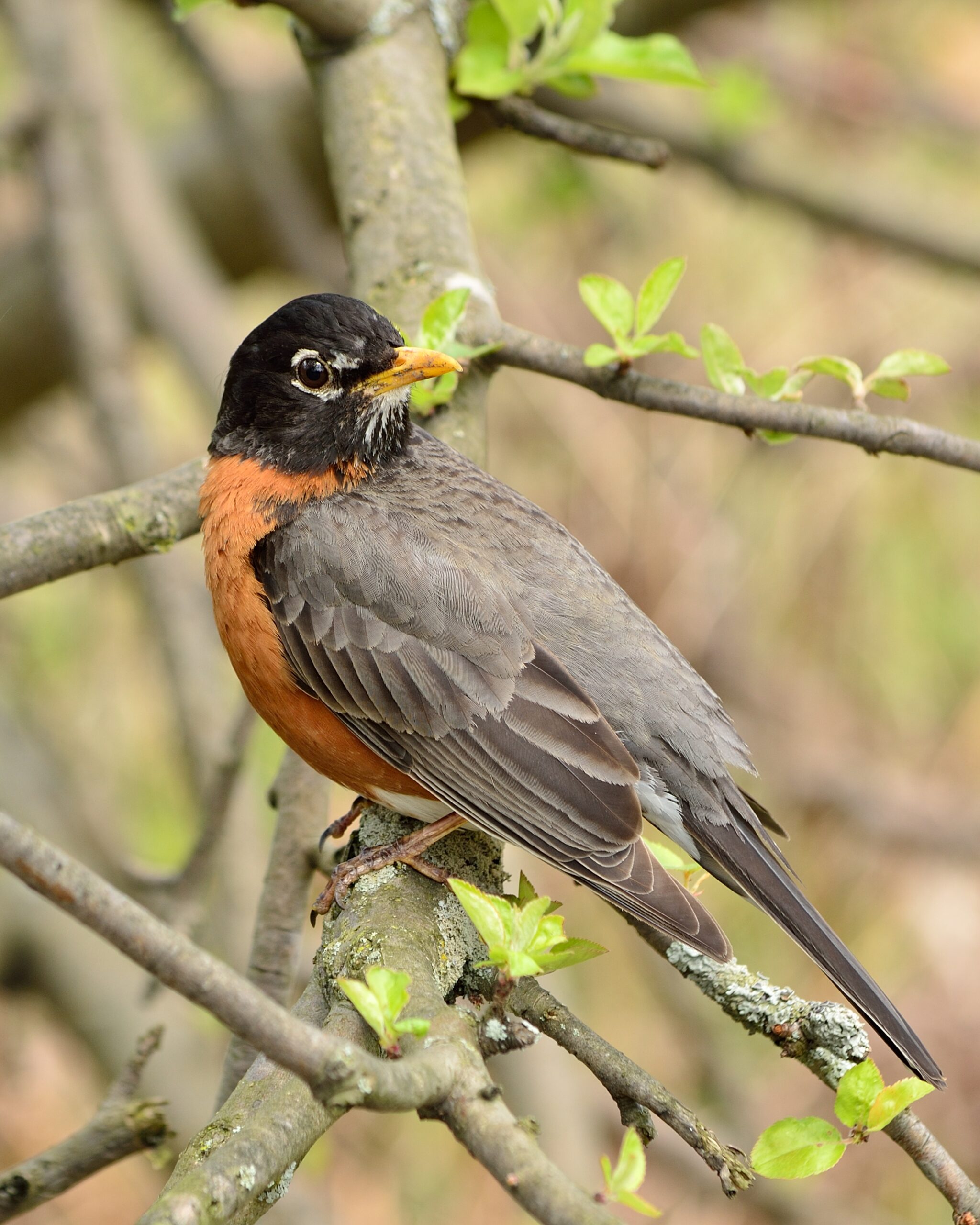 | American Robin |
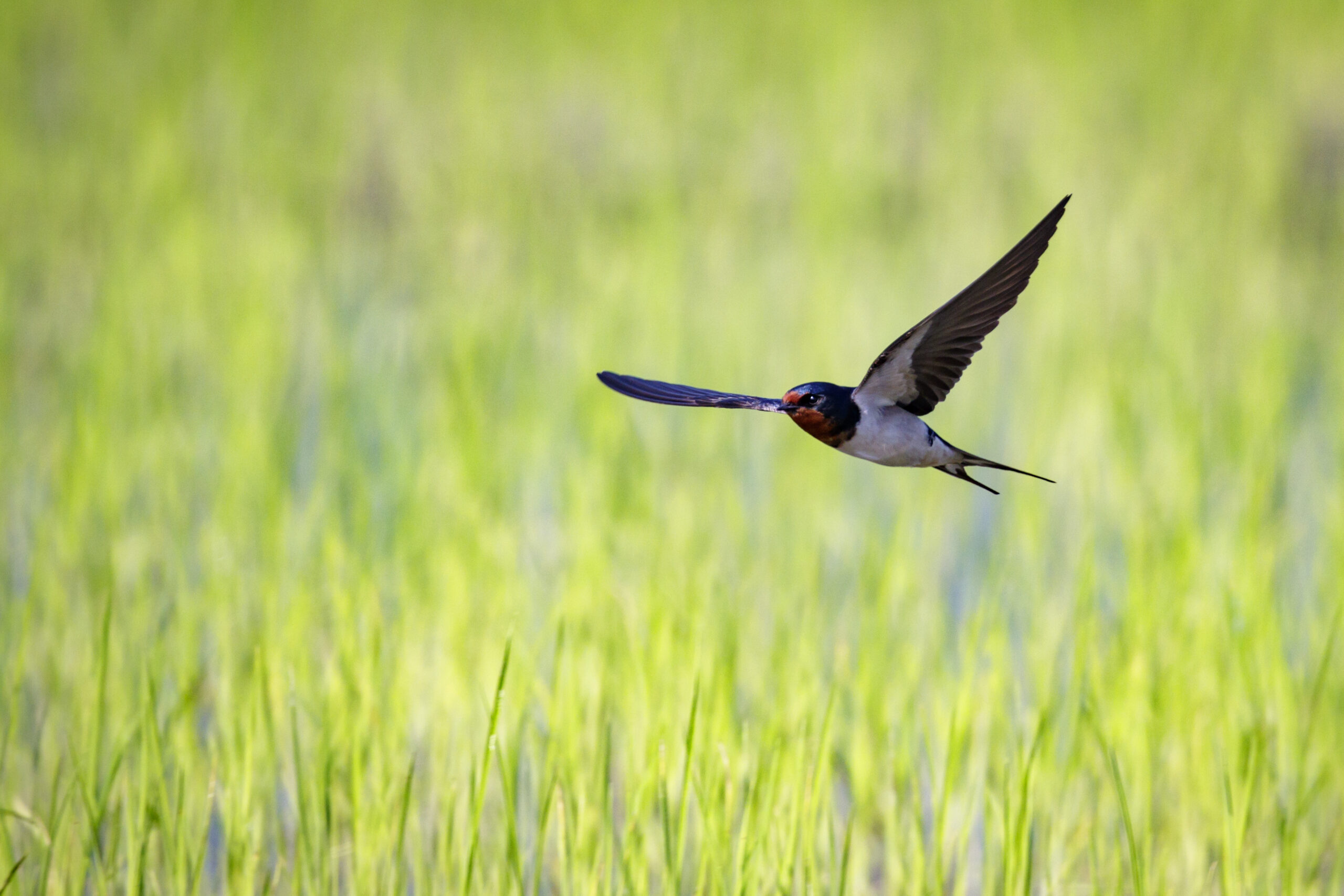 | Barn Swallow |
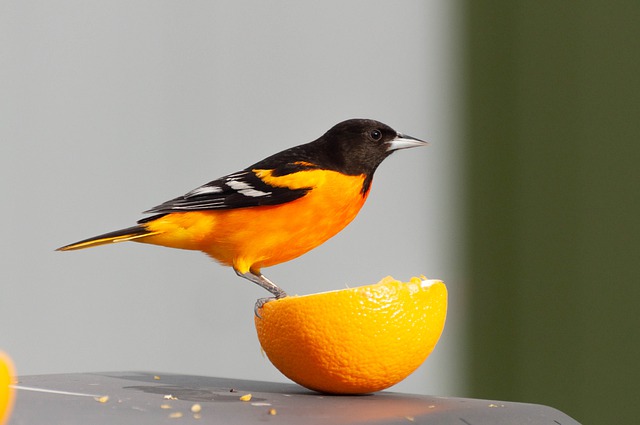 | Baltimore Oriole |
 | Orchard Oriole |
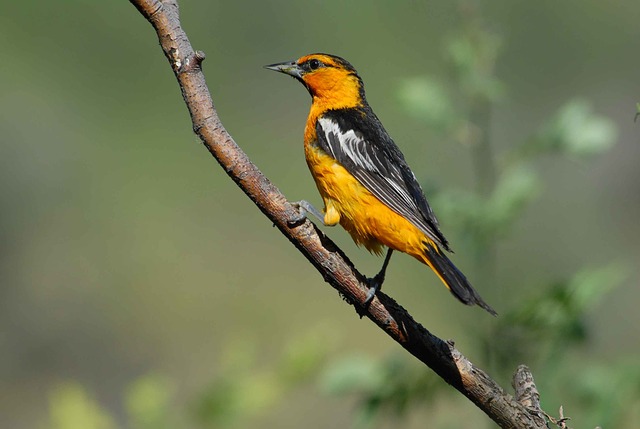 | Bullocks Oriole |
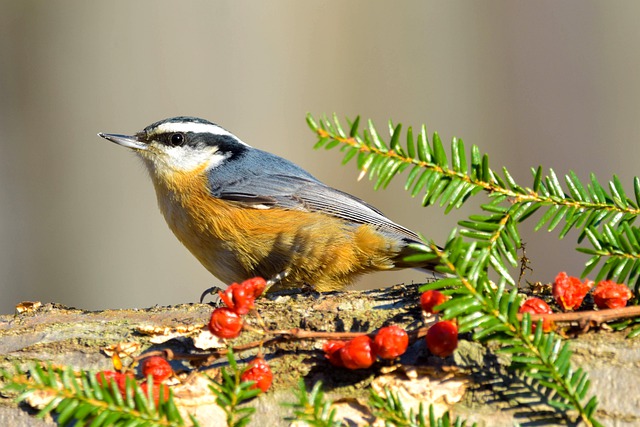 | Red-breasted Nuthatch |
 | Eastern Towhee |
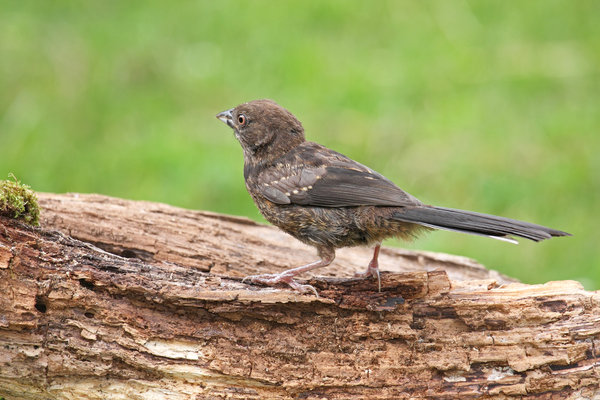 | Spotted Towhee |
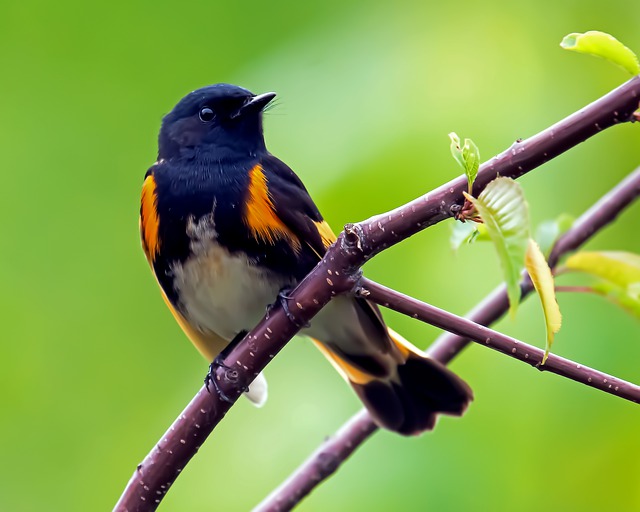 | American Redstart |
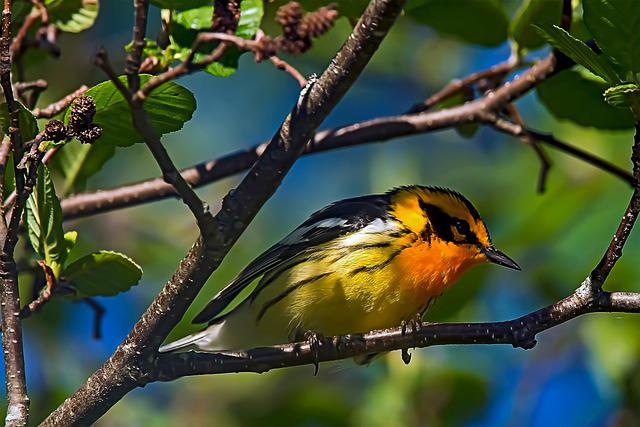 | Blackburnian Warbler |
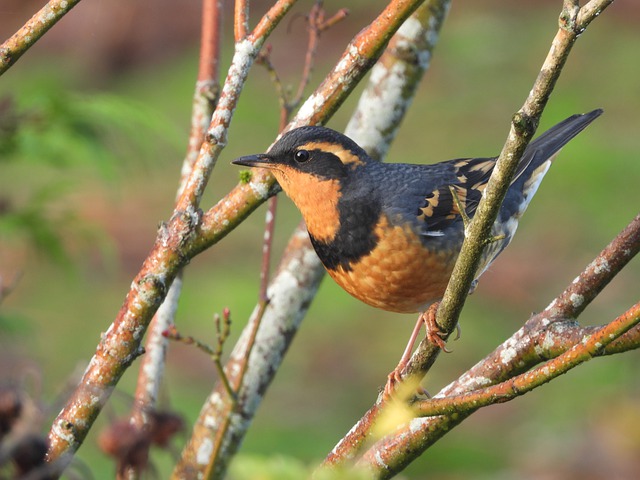 | Varied Thrush |
Types of Orange Birds in Ontario
1. American Robin

The scientific name for the American robin is Turdus migratorius the length of this bird is about 9 – 11 inches, and they weigh approximately about 64 – 84 grams.
Their wingspan ranges from 14 – 16 inches. American robins frequent suburban and rural backyards all year long.
It is frequently simpler to recognize a male robin than a female.
Males have black heads, yellow bills, rust-colored feathers on their chests, and white outlines around their eyes. Their wings and backs are grey as well.
The only difference between the sexes is that the females look paler.
Habitat & Food
They can be found everywhere and live in a range of settings, including forests, backyards in the suburbs, and tundra.
Fortunately for us, these thrushes are sociable and frequently seen in backyards due to the fact that they don’t eat seeds. American Robins, despite being widespread, rarely frequent bird feeders.
Instead, they eat fruit and invertebrate animals like worms, insects, and snails. American robins can have two or three sets of young within a breeding season, which is earlier than many other species.
Three to five eggs may be laid in a clutch, and they take around two weeks to hatch. About two weeks after hatching, the young birds leave the nest, with the females feeding and caring for them.
2. Barn Swallow
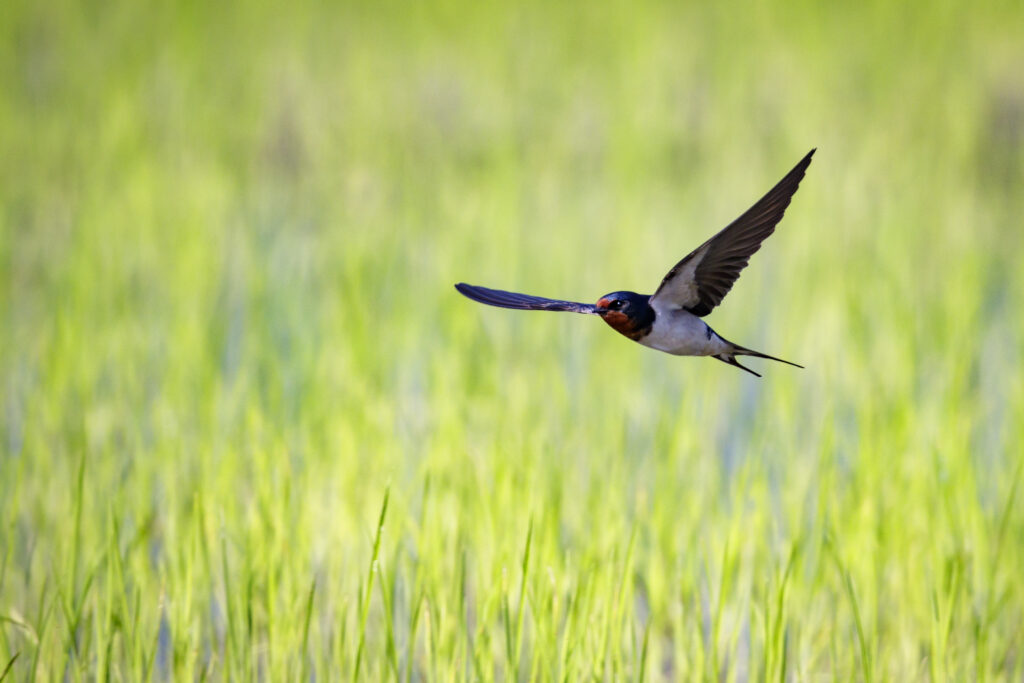
The scientific name for this orange bird is Hirundo rustica.
They have a length of 6 – 7.5 inches and weigh approximately 17 – 20 grams, whereas their wingspan ranges from 11.2 – 12.6 inches.
The abdomen, chest, and forehead are reddish-orange in color.
The head and back are an intense blue color. Long, pointed wings that are connected to broad shoulders. And a long, forked tail.
Barn swallows are regularly spotted over bodies of water, eating insects.
Barn swallows typically built their nests in caves, but after successfully adapting to people, they now nearly exclusively do so on man-made buildings.
Feeds mostly on flies, beetles, wasps, wild bees, winged ants, and true bugs. It also consumes a wide range of other flying insects. 4 – 5, occasionally 6, rarely 7, white with brown flecks.
3. Baltimore Oriole

The scientific name for this orange bird is the Icterus galbula.
It has a length of about 6.5 – 8 inches and weighs approximately 22 – 42 grams, where its wingspan ranges from 3.5 – 4 inches.
Males have a distinctive, beautiful coloration of orange, black, and white wing bars.
However, females are also stunning in their own sense, with duller colors than males and no black hood or back.
Baltimore Orioles enjoy open woods, the edge of forests, riversides, and tiny groves of trees. They do not thrive in dense forests.
Food
In the undergrowth and foliage, they scavenge for fruits and insects as well. The Baltimore Oriole has made a good adjustment to human habitation, and it frequently feeds and nests in yards, parks, and orchards. Baltimore
Insects, fruit, and nectar are all consumed by Baltimore Orioles. Insects, which are abundant in the proteins required for growth, make up a large amount of the diet throughout the summer when animals are reproducing and feeding their young.
Nectar and ripe fruits make up a larger portion of the diet in the spring and fall; these sugary items are easily turned into fat, which provides energy for migration.
Baltimore Orioles create amazing hanging nests that resemble socks by weaving together thin strands.
Construction of the nest takes roughly a week, but if it’s windy or raining, it could take up to 15 days.
A Baltimore Oriole mating produces 3–7 gray–white eggs with black streaks. An additional 11–14 days pass between the time the Baltimore Orioles’ eggs are laid and the time the young of the species depart the nest.
4. Orchard Oriole

The scientific name for this orange bird is Icterus spurius.
It has a length of 5.9 – 7.1 inches and weighs 16 – 28 grams, whereas the wingspan is about 9.8 inches.
Orchard Oriole males have darker orange plumage that gives them a rusty appearance, in contrast to the bright orange plumage of most oriole species.
Females have black wings with white wing bars and are greenish-yellow in color. It prefers parks, neighborhoods, clearings in the woods, and forest margins. Ignores dense woodland.
Frequently seen in somewhat wide places with sporadic stands of trees.
Habitat
They are most likely to be spotted in backyards when they are either eating mulberries from a tree or looking for insects in shrubby vegetation.
The tops of trees are where orchard orioles hunt for insects. In the autumn, they consume berries and other foods, as well as nectar from flowers.
They occasionally go to hummingbird feeders and consume jelly or orange slices there.
They hunt parasitic wasps, ants, bugs, caterpillars, grasshoppers, crickets, beetles, mayflies, and spiders as prey from the vegetation.
Although Orchard Orioles find a new mate every year, they remain monogamous during each breeding season.
They typically raise a single brood before leaving breeding grounds in mid- to late-summer after arriving on them in late spring.
Away from the main trunk, the nests are typically fastened to forked twigs or branches at various heights. The female constructs the majority of the nest, finishing it in around six days.
The female lays 3–7 darkly marked, light blue eggs. For females, the incubation period lasts 12 to 14 days.
The male, who also watches over the nest, feeds her. The chicks have buff or grey down covering them. Both adults feed the animals. About 11 to 14 days after hatching, they depart the nest.
They spend a week in a habitat that is heavily forested and close to the nest. The female and the young then stay in the region.
They consume fruits up until August when they begin to migrate.
5. Bullocks Oriole

The scientific name for this bird is Icterus bullockii.
They typically have a length of about 6.7 – 7.5 inches and weigh approximately 30 – 43 grams, and their wingspan is about 12 inches.
Bright orange in color, males can be distinguished from females by a black line that runs across their eyes and a black neck.
Females have a distinct appearance with a greyish body and a yellowish head, chest, and tail.
The Bullock’s Oriole has grey legs and feet, a long tail, dark brown eyes, and a pointed bill as an adult.
The adult male Bullock’s Oriole is entirely black, with the exception of a white patch on one wing, and has an orange face, rump, and underparts.
The upper parts of the adult female Bullock’s Oriole are gray-brown, with a faint yellow color on the breast and belly.
Habitat
Riparian forests, shade trees, parks, cities, and deciduous woodlands. Nesting: 4 – 6 grey eggs with dark brown and black spots and scribbles.
Nest is a skillfully woven pendant bag made of plant fibers, bark, and string that hangs from a branch.
Breeds in southern California, Mexico, the Dakotas, and Texas, in addition to British Columbia and southern Alberta in the tropics, winter.
6. Red-breasted Nuthatch

This orange bird is also known as Sitta Canadensis.
It has a length of about 4.3 inches and weighs approximately about 8 – 13 grams, whereas its wingspan ranges from 7 – 7.9 inches.
They have pale rust-brown underparts and blue-gray upper parts. White neck; black eyestripe; white eyebrow; and black cap on the head. Bill has an upward tilt.
And their Foot and leg color is black. The primary habitat of nuthatches is coniferous woodland, which includes spruce, fir, pine, hemlock, larch, and western red cedar.
More deciduous forests, such as aspen, birch, poplar, oak, maple, and basswood, are used by eastern populations.
Habitat
Nuthatches may use habitats including orchards, scrub, parks, plantations, and shade trees during irruptive winters.
Red-breasted Because they are aggressive, nuthatches may outnumber larger birds at feeders. One of the rare non-woodpecker species that dig their own nest chambers out of solid wood is the nuthatch.
Males that are agitated may cry to one another while swiveling back and forth, pointing their heads upward, and flapping their wings.
The nest is constructed by the female t out of pine needles, shredded bark, and grass before lining it with hair, feathers, or fine grasses.
Conifer resin is applied to the entrance by both sexes, sometimes using a piece of bark, which is an impressive display of tool use.
In the months of April through June, red-breasted nuthatches lay eggs. 24 days before young birds leave the nest and become much easier to spot, the majority of eggs were deposited in that state in May and June.
Although 5 to 6 eggs are more common, a pair of nuthatches can lay anywhere from 2 to 8 eggs.
The dots on the eggs are reddish-brown and are either white or creamy.
7. Eastern Towhee

This orange bird is scientifically known as Pipilo erythrophthalmus.
The length of this bird is 6.8 – 8.2 inches, and they weigh approximately 32 – 52 grams, whereas its wingspan ranges from 8 – 11 inches. Ground sparrows are called eastern towhees.
Male and female eastern towhees are significantly different at first glance. While the females are brown, the males are black. But upon closer observation, it becomes apparent that the males and females have various shared markings.
Eastern towhees have white chests, orange sides, and yellowish rumps on both sexes.
Eastern towhees have a 10-inch (25 centimeter) wingspan and are around eight inches (20 centimeters) in length.
In the summer, they move to the Northeast and the Great Lakes region. These birds prefer pastures, scrublands, and wooded areas with bushes.
They favor areas with lots of ground cover so they can look for food.
Food
Eastern towhees spend the majority of their time on the ground or on low shrubs hunting for seeds, insects, and fruit.
With their feet, the birds scratch the ground in search of food that has been hidden beneath debris or leaves. The large beak of the eastern towhee aids in breaking open seeds.
Additionally, the bird occasionally consumes small salamanders, lizards, or snakes. It also consumes spiders, snails, and millipedes. Females make their nests beneath shrubs or heaps of brush.
The nest is built by the bird using twigs, leaves, and bark, and it is lined with animal hair.
A female will lay two to six eggs, each of which will take 12 to 13 days to hatch.
The hatchlings are raised by both parents until they become independent 10 to 12 days later.
Brown-headed cowbirds frequently brood and parasitize Eastern Towhees by laying their eggs in the towhee’s nest.
The cowbird hatchling is raised as the towhee’s own by incubating the eggs.
8. Spotted Towhee

The scientific name for this bird is Pipilo maculatus.
They have a length of about 6.7 – 8.3 inches and weigh approximately 33 – 49 grams, and they have a wingspan of about 11 inches.
These birds have large bodies, short necks, and rounded tails.
Males have a rusty orange tint on their sides and a white belly with predominantly black bodies that have white markings on their wings.
Although primarily greyish brown, females have a similar appearance.
Food
Towhee forages in the leaf litter for insects and seeds. Birds typically consume insects or other high-protein arthropods during the nesting season.
They mostly consume seeds and berries for the remainder of the year. And they consume acorns.
For searching the earth for seeds and insects, they employ the double scratch method.
The spotted towhee typically produces 2 to 6 eggs, which are purple and red-brown with white or grey flecks.
The female of the spotted towhee incubates the eggs for 12 to 14 days.
It builds its nest on the ground in trees or shrubs. Grass, leaves, and twigs are the primary materials used in their nest.
9. American Redstart

This orange bird is also known as Setophaga ruticilla.
They have a length of about 4.3 – 5 inches, weigh approximately 6 – 9 grams, and have a wingspan of about 6.3 – 7.5 inches.
The upper parts of adult males are primarily black with prominent orange spots.
Large patches of brilliant orange are seen on the sides of the breast, the bases of the wing feathers, and the bases of the outer tail feathers.
White coverts cover the undertail and the belly. The same pattern is present in adult females, although they have predominantly grey upper parts with patches of brilliant yellow or orange as they age.
The wings and tail feathers are a darker grey than the head, and they have olive-colored backs. Pale grey to white under-tail coverts, belly, and throat.
Varies its habitat choices according to the time of year and its location.
Habitat
Throughout much of the United States and southern Canada, this warbler spends the breeding season in open-canopy woods that are primarily deciduous, second-growth, and forest edges.
This insectivorous bird, which frequently congregates in areas used by other warblers, feeds in the middle to lower reaches of a tree or shrub.
Males will choose territories that have multiple of these prospective nesting areas because it prefers to build their nest well into dense shrubs or the fork of a low tree.
Though almost entirely an insectivore, this bird will occasionally eat berries or seeds in the fall when the number of insects drops.
Following the formation of a pair, the female alone chooses the location of the nest, which is often up against a tree trunk and concealed by thick foliage.
The intricately woven, delicate components of the cup-shaped nest include grass, feathers, roots, birch bark, and animal hair.
The female then lays 2 to 5 white or cream-colored eggs that are flecked with varying amounts of brown after the nest is finished. For 10 to 13 days, the female incubates the clutch.
The young leave the nest after nine days and can stay with one parent for up to three weeks after they leave.
10. Blackburnian Warbler

The scientific name for this orange bird is Setophaga fusca.
They have a length of about 4.3 – 4.7 inches and weigh approximately 9 – 12.6 grams, whereas their wingspan ranges from 8 – 9.1 inches.
All variations of the Blackburnian Warbler have dark, triangular cheek patches. This patch’s triangular shape is distinctive.
This warbler has a color on the sides of the neck and an eyebrow that wraps around the ear patch.
All forms of Blackburnian Warblers feature wing bars or patches as well as two pale lines.
Blackburnian Warblers feature black triangular ear patches with an orange throat and face in their breeding plumage.
On the sides and belly, the throat turns a pale yellow color. In breeding plumage, adult female Blackburnian Warblers resemble their male counterparts but are lighter and yellower.
Instead of the vivid orange of the males, they have an orange-yellow color, and the markings are less apparent.
Food
The main food source for Blackburnian Warblers in their breeding grounds is insects. Their diet consists primarily of caterpillars, notably spruce budworm larvae.
In addition, spiders, larval and adult flies, beetles, ants, aphids, and lacewings are consumed by Blackburnians throughout the breeding season.
The Blackburnian Warbler is a Neotropical Migrant, which means it spends the winters south of the continental United States and moves north to nest in the spring and summer in temperate regions of North America. Soon after pairing, nest construction begins.
The majority of observers concur that only the female constructs the cup-shaped nest, which is lined with lichens, mosses, and dead pine needles and is made of twigs, bark, and plant fibers.
The eggs are laid by the female in a clutch of three to five, and they hatch after 12 to 13 days. Only females have broods.
The nestlings are fed by both parents. Blackburnian Warblers typically only have one brood per season, but if their nest is destroyed, the female may lay extra clutches.
11. Varied Thrush

The scientific name for this orange bird is Ixoreus naevius.
They have a length of about 7.6 – 10.2 inches, their weight is about 65 – 100 grams, and their wingspan lies between 13.5 – 15 inches.
The varied thrush is large in size, with dark grey upper parts, a rust-brown throat, breast, sides, and brows; a black breast band; and a white belly and under tail.
Dark grey wings have two rust-colored bands. The dark grey tail has white corners.
Brown feet and legs during the initial days after leaving the nest, fledglings are typically in close contact with their parents.
The Varied Thrush tends to reproduce in mature and old-growth coniferous woodland, and it is vulnerable to losing its habitat, particularly through significant clearcutting.
Habitat & Food
Dense water-rich deciduous or coniferous woods. The Varied Thrush prefers berries and insects.
Its summer diet consists of insects like beetles, ants, caterpillars, crickets, snails, earthworms, and spiders. During the winter, berries, wild fruits, some seeds, and acorns make up the majority of its diet.
The nest is often built by females in the understory of an established forest, frequently in an area that is surrounded by several older nests.
The female gathers the components for the nest and weaves an exterior covering from twigs of alder, fir, hemlock, or spruce.
She adds a middle layer of decomposing grass, rotting wood, mud, or moss, which solidifies into a cup.
The female lays 1 to 5 greenish-blue eggs with faint brown spots. By females, incubation lasts 12 to 14 days. These chicks are nourished by both parents when they hatch.
At around 13 to 15 days old, they fledge. There may be two clutches of this species per year.
Conclusion
The orange birds found in Ontario vary greatly, but one thing they have in common is their orange coloration.
They get their distinctive orange color due to their diet and Carotenoids.
Besides, they vary almost in all regards, whether it’s their migration or their incubation periods and their sizes, and they are also somewhat common when it comes to their diet.
FAQ
What is the scientific name for Baltimore Oriole?
The scientific name for Baltimore Oriole is Icterus Galbula.
What is the average weight of American Redstart?
The average weight of an American Redstart is 6 – 9 grams.
Last Updated on March 22, 2023 by Lily Aldrin
